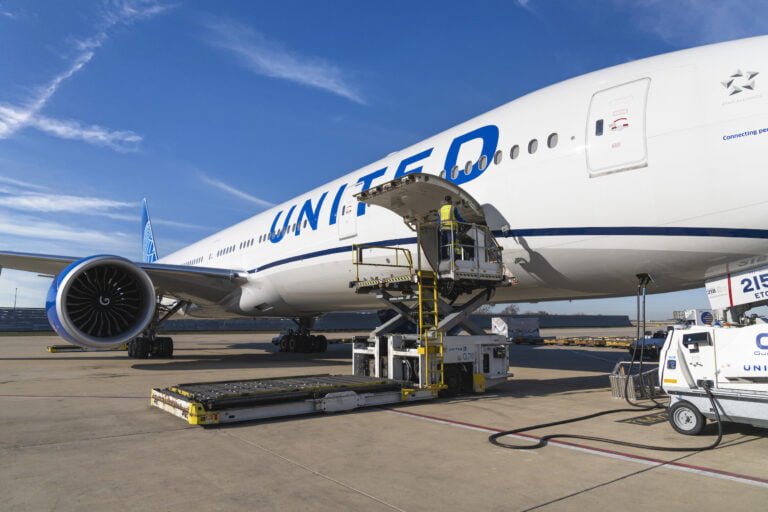In conversation with Chris Busch, Vice President, United Cargo Americas.
Q. How significant is Latin America in United Airlines Cargo’s overall business strategy? Which countries in Latin America are the primary markets for United Airlines Cargo, and why?
A. Latin America is a vital component of United Airlines Cargo’s global service strategy, particularly for our freight forwarding partners. Our commitment to this region is reflected in the substantial contributions it makes to our overall results. We have a robust presence in Latin America, with our widebody network extending to key markets such as Brazil, Argentina, Chile, Peru and Puerto Rico, which allows us to offer increased capacity. Additionally, our operations in narrowbody locations, including Colombia, Ecuador, Guatemala and Costa Rica, are consistently high-performing, further underscoring the significance of Latin America in our business strategy.
Q. What are the main drivers behind your expansion strategy in this region?
A. The expansion strategy in Latin America for United Airlines Cargo is driven by continuous evaluation of optimal routes by our network planning team, especially as we plan for and take delivery of new aircraft. This strategic approach ensures that we are effectively deploying our resources to meet the demands of the market and enhance our service offerings in the region.
Q. Does United Airlines Cargo have any strategic partnerships with local airlines or logistics providers in Latin America? How do these partnerships enhance your service offerings in the region?
A. United Airlines Cargo has established strategic partnerships with local airlines such as Copa and Avianca, which are instrumental in enhancing our service offerings in Latin America. These collaborations are particularly valuable given that several of our routes to the region are serviced by narrowbody aircraft. Through interline partnerships, our team has successfully expanded our cargo capabilities across Latin America, ensuring a more comprehensive and efficient service for our customers.
Q. Can you detail the key cargo routes operated by United Airlines Cargo within Latin America?
A. United Airlines Cargo operates several key cargo routes within Latin America that are essential to our network. These include strategic routes from Brazil to Houston, Chicago, Newark and Washington’s Dulles International Airport. Additionally, we have significant routes from San Juan to Houston, Argentina to Houston, and Lima, Peru to Houston. These routes are carefully chosen to ensure efficient cargo transport and to meet the needs of our customers in the region.
Q. What kind of infrastructure investments has United Airlines Cargo made in Latin America? How do you ensure the efficiency and reliability of cargo operations at key airports in this region?
A. United Airlines Cargo has made significant infrastructure investments in Latin America, including the development of an extensive road feeder network that supports cities such as CWB, CNF, POA, REC, and VCP. To ensure the efficiency and reliability of our cargo operations at key airports in the region, we maintain close collaboration with our service partners. This partnership is crucial for achieving our key operating metrics and delivering the high-quality service our customers expect.
Q. What are the logistics and handling challenges you face in Latin America, and how do you address them? Are there any unique operational practices employed in Latin America to cater to regional needs?
A. In Latin America, United Airlines Cargo encounters challenges primarily associated with older government-run warehouses that often have limited space and equipment. To address these issues, we have dedicated local and regional operational personnel who meticulously monitor key performance indicators (KPIs) for every flight at each station. This vigilant oversight enables us to swiftly identify and rectify any issues before they escalate, ensuring that our on-time delivery metrics and customer expectations are consistently met. Our proactive approach and tailored operational practices are designed to cater to the unique needs of the region, thereby maintaining the high standard of service our customers rely on.
Q. What are the major types of cargo transported to and from Latin America? How has the demand for air cargo services in Latin America evolved in recent years?
A. The major types of cargo transported to and from Latin America by United Airlines Cargo include automotive parts, agricultural equipment, perishables such as fruits, vegetables, and seafood, as well as textiles and pharmaceuticals. Over the past few years, we have observed a rising demand for air cargo services in the region, reflecting the dynamic nature of the Latin American market and its growing significance in global trade.
Q. Who are the primary customers for United Airlines Cargo in Latin America (e.g., industries, businesses)? How do you cater to the specific needs of customers in this region?
A. United Airlines Cargo operates in 34 cities across 17 different countries in Latin America. United Airlines Cargo’s primary customers in Latin America include both global and regional/specialised freight forwarder partners. We are committed to understanding the unique needs of all our customers and potential customers, and we strive to align our capabilities with their requirements. Our approach is customer-centric, allowing us to often customise our capabilities to meet specific customer needs, ensuring that we provide tailored solutions that support their business objectives.
Q. How do you differentiate your services from competitors in the region? What KPIs do you use to measure the success of your cargo operations in Latin America? What are the biggest challenges United Airlines Cargo faces in Latin America?
A. United Airlines Cargo differentiates itself in the Latin American market through the dedication and expertise of our team. Our top-notch sales and operations personnel collaborate closely with a shared purpose, embodying the ‘cargo heart’ – a commitment to delivering the best service every day. The major Key Performance Indicators we focus on are “Flown as Planned” and “On Time Delivery,” as these are the metrics that matter most to our customers. The biggest challenges we face in the region stem from the uncertainty surrounding presidential elections and the dynamic nature of government regulations, which require constant vigilance and adaptability.



